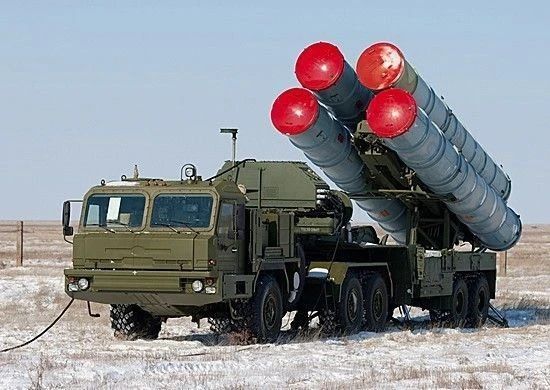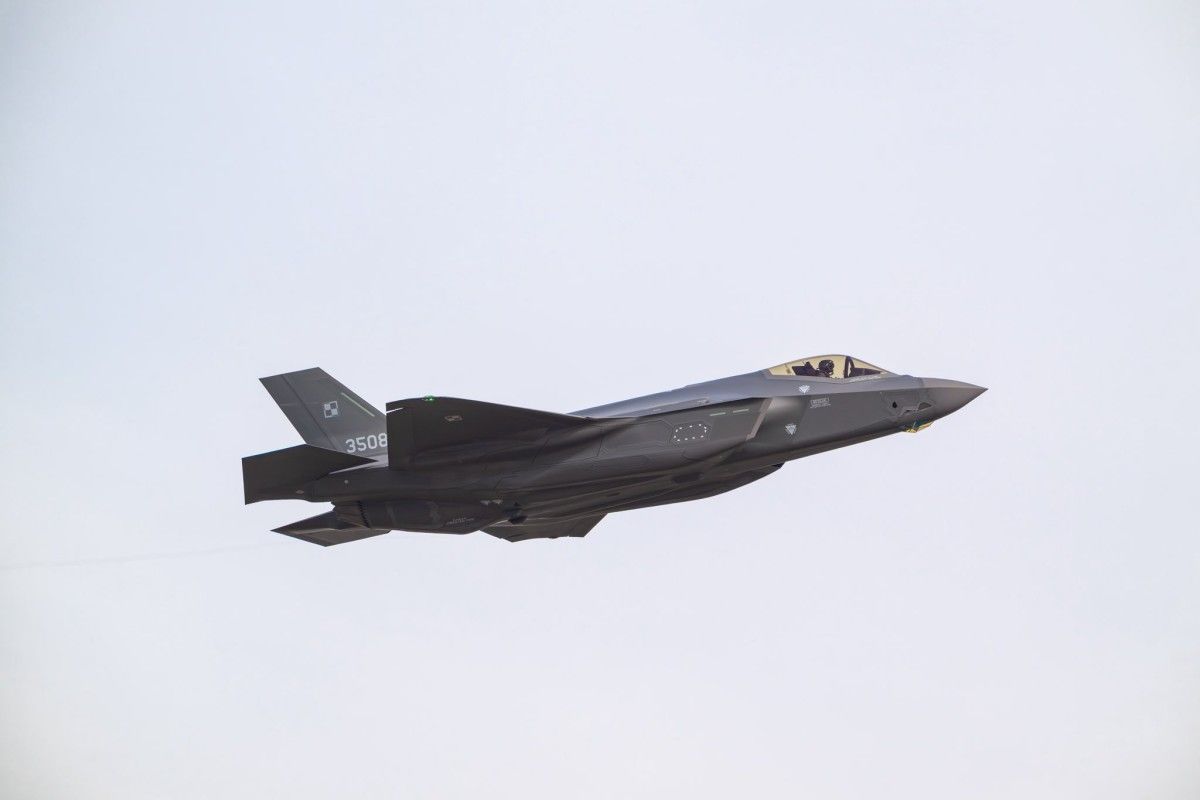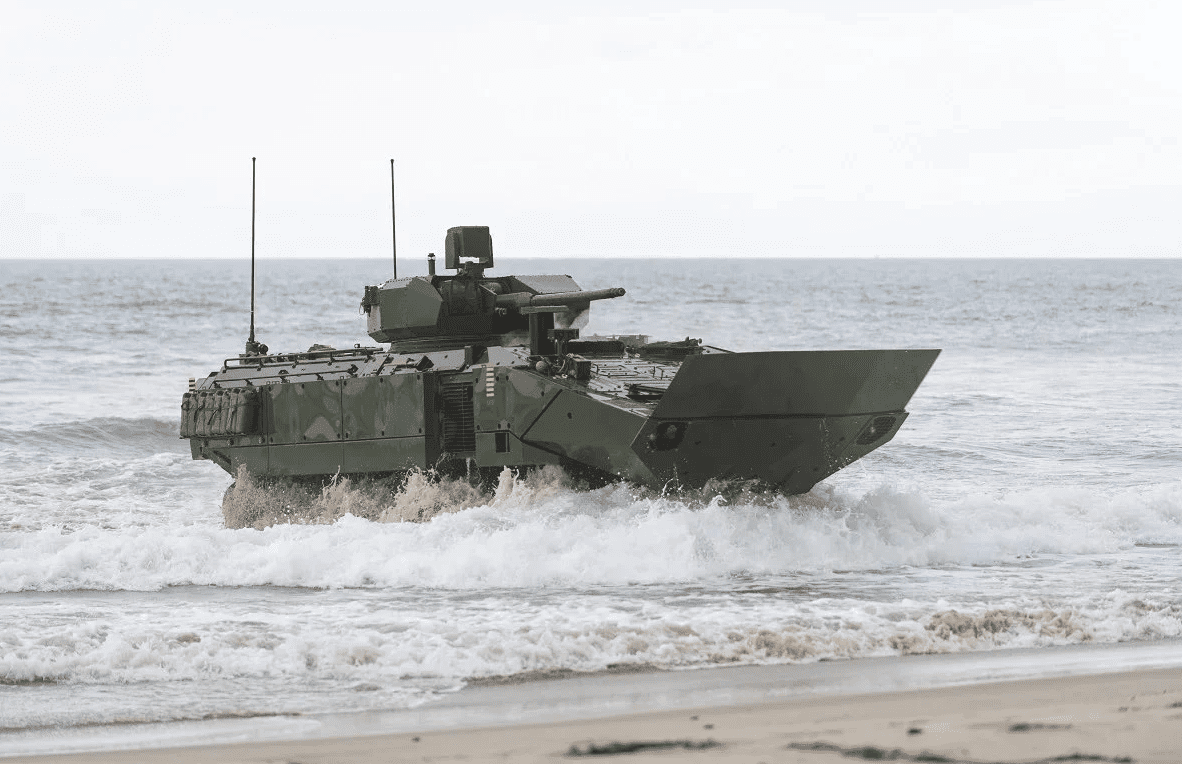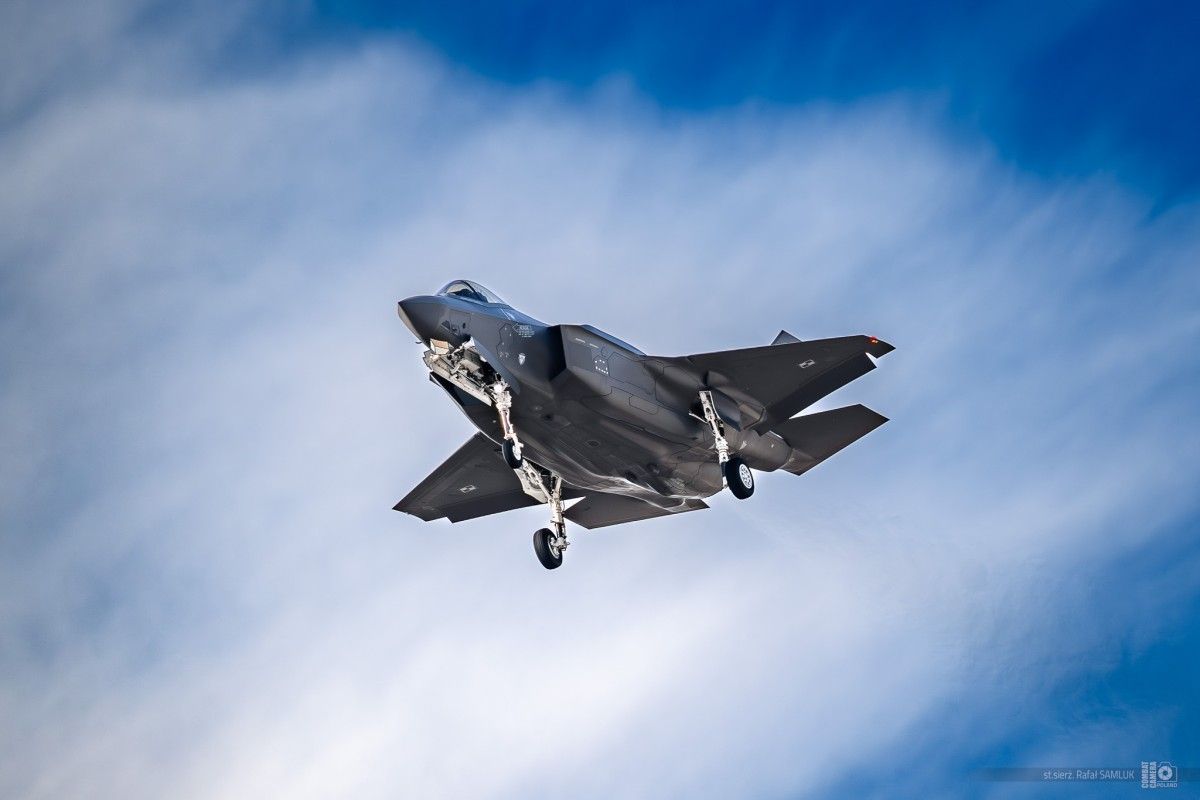
Соединенные Штаты и другие страны продолжают полагаться на истребители, которые впервые совершили полет более полувека назад. Эти самолеты остаются ценными благодаря регулярной модернизации, экономии средств и проверенным конструкциям, которые делают их боеспособными даже в современную эпоху.
Продлевая срок службы существующих флотов, военно-воздушные силы экономят миллиарды при сохранении готовности. От McDonnell Douglas F-4 Phantom II до Boeing B-52 Stratofortress история показывает, что долговечность в сочетании с модернизацией позволяет старым самолетам оставаться актуальными.
Многие из этих истребителей впервые поступили на вооружение в эпоху холодной войны, но продолжают действовать по всему миру, отражая их устойчивость и адаптивность. Давайте посмотрим на эти 7 истребителей с самым продолжительным сроком службы.
 Фото: истребители F-35 Lockheed Martin летают над головой / Pexels
Фото: истребители F-35 Lockheed Martin летают над головой / PexelsПочему истребители остаются на службе десятилетиями
Истребители с длительным сроком службы предлагают практические и финансовые преимущества. Страны избегают огромных затрат на разработку совершенно новых самолетов путем модернизации двигателей, радиолокационных систем и авионики. Эти изменения дают старым самолетам возможность конкурировать с новыми конструкциями.
Кроме того, пилоты и обслуживающие экипажи часто предпочитают проверенные планеры, которые надежны и знакомы. Это сокращает время обучения и обеспечивает устойчивый оперативный потенциал во время конфликтов.
Многие военно-воздушные силы также держат старые самолеты на вооружении, потому что они служат надежной учебной платформой для новых пилотов. Вместо того, чтобы рисковать передовыми истребителями пятого поколения в базовых учебных или второстепенных миссиях, военные полагаются на проверенные самолеты.
Эти самолеты также выполняют ценные вспомогательные функции, включая разведку и радиоэлектронную борьбу, где не всегда необходима передовая скрытность. Кроме того, запасные части для устаревших самолетов часто легче получить, что делает долгосрочное техническое обслуживание практичным.
Объединив эти факторы с устойчивой модернизацией, правительства достигают баланса между доступностью и оперативной готовностью, гарантируя, что их воздушные флоты остаются способными в нескольких миссиях.
 Фото: Алан Уилсон | Wikimedia Commons
Фото: Алан Уилсон | Wikimedia Commonshttps://commons.wikimedia.org/w/index.php?curid=74583190
1. Макдоннелл Дуглас Ф-4 Фантом II
McDonnell Douglas F-4 Phantom II совершил первый полет в 1958 году. Он стал основой ВВС и ВМС США во время холодной войны. Экспортировался широко, Фантом видел боевые действия в Азии и на Ближнем Востоке.
Модернизация радаров, авионики и оружия позволила ему служить в 21 веке. Даже сегодня некоторые страны сохраняют его на второстепенных ролях, таких как разведка и обучение.
 Фото: USAF
Фото: USAF2 Lockheed Martin F-15 Eagle
Представленный в 1970-х годах, Lockheed Martin F-15 Eagle остается на действительной службе. Известный скоростью и маневренностью, он имеет один из лучших боевых рекордов в истории.
Программы модернизации создали передовые версии, такие как F-15EX, которые, вероятно, продлят срок эксплуатации самолета на десятилетия. Его способность адаптироваться делает его постоянной опорой ВВС США.
Lockheed Martin F-15 Eagle находится на вооружении с 1976 года, сочетая высокое соотношение тяги к весу с передовыми радиолокационными системами. Он известен превосходством в воздухе, имеет радар AN/APG-63, интегрированную авионику и может нести различные ракеты.
 Фото: Gojanovic123456789 - Commons, CC BY-SA 4.0, https://commons.wikimedia.org/w/index.php?curid=85798765
Фото: Gojanovic123456789 - Commons, CC BY-SA 4.0, https://commons.wikimedia.org/w/index.php?curid=857987653. Микоян-Гуревич МиГ-21
МиГ-21, разработанный Советским Союзом в 1950-х годах, является одним из самых производимых истребителей в истории. Его простой дизайн и низкие затраты на техническое обслуживание сделали его популярным во многих странах.
Несмотря на свой возраст, МиГ-21 остается в ограниченном количестве, в том числе с ВВС Индии. Текущие обновления сделали его актуальным для задач противовоздушной обороны далеко за пределами первоначальных ожиданий.
МиГ-21 получил прозвище «летающий гроб» из-за его небольших размеров, ограниченной топливной емкости и минимальных функций безопасности. Высокая загрузка крыла, отсутствие передовых систем катапультирования в ранних моделях и требовательные летные характеристики сделали его неумолимым для неопытных пилотов.
 Фото: TSGT CURT EDDINGS | Wikimedia Commons
Фото: TSGT CURT EDDINGS | Wikimedia Commons4. Обсуждение Dassault Mirage III
Французский Dassault Mirage III поступил на вооружение в 1960-х годах. Его дельта-крыло и адаптивность сделали его фаворитом среди военно-воздушных сил во всем мире.
Мираж III участвовал в нескольких конфликтах, включая Шестидневную войну. Его долговечность была поддержана структурными обновлениями и улучшенной авионикой, продлевая срок службы в таких странах, как Аргентина и Пакистан.
 Фото: Карлос Менендес Сан-Хуан - B-52 Stratofortress, CC BY-SA 2.0, https://commons.wikimedia.org/w/index.php?curid=37272829
Фото: Карлос Менендес Сан-Хуан - B-52 Stratofortress, CC BY-SA 2.0, https://commons.wikimedia.org/w/index.php?curid=372728295 Boeing B-52 Stratofortress
Хотя технически это бомбардировщик, Boeing B-52 Stratofortress заслуживает места в этом списке благодаря своей непревзойденной долговечности. Первый полет в 1955 году, он остается центральной частью Стратегического авиационного командования США.
B-52 постоянно модернизировал двигатели, оружие и системы связи. Текущие прогнозы предполагают, что он останется на вооружении в 2050-х годах, что делает его одним из самых длительных военных самолетов в истории.
B-52 Stratofortress провел широкий спектр миссий, от высотных стратегических бомбардировок и ядерного сдерживания до низкоуровневых обычных ударов, морского патрулирования и поддержки с воздуха.
Его способность адаптироваться к новым системам вооружения и профилям миссий поддерживала его работоспособность в течение более шести десятилетий во многих конфликтах по всему миру.
 Фото: USAF
Фото: USAFВажность модернизации старых самолетов
Сохранение старых самолетов в эксплуатации показывает важность экономической эффективности в оборонной стратегии. Вместо замены целых флотов модернизация продлевает срок службы доверенных самолетов.
Модернизируя авионику, системы вооружения и двигатели, военно-воздушные силы сохраняют сильные возможности и экономят ресурсы. Эти решения показывают, что хорошо спроектированные самолеты могут продолжать служить долго после их первоначального запуска.
| Макдоннелл Дуглас Ф-4 Фантом II | 1958 год | США, Германия, Япония, Греция | Превосходство в воздухе, наземная атака, разведка |
| Lockheed Martin F-15 Eagle | 1976 | США, Япония, Саудовская Аравия, Израиль | Доминирование в воздухе, перехват, многоцелевой бой |
| Микоян-Гуревич МиГ-21 | 1959 | Индия, Вьетнам, Румыния, Хорватия | Перехват, точечная защита, обучение |
| Обсуждение Dassault Mirage III | 1961 | Франция, Израиль, Аргентина, Пакистан | Перехват, ударные миссии, разведка |
| Boeing B-52 Stratofortress | 1955 | Соединенные Штаты Америки | Стратегические бомбардировки, дальний удар, морское патрулирование |
 Фото: Jesús Esteban Сан-Хосе: https://www.pexels.com/photo/pilot-of-military-fighter-airplane-26510106/
Фото: Jesús Esteban Сан-Хосе: https://www.pexels.com/photo/pilot-of-military-fighter-airplane-26510106/Нижняя линия
Длительный срок службы этих истребителей демонстрирует, как долговечность, адаптивность и экономичность формируют современную воздушную мощь. Инвестируя в непрерывную модернизацию вместо полной замены, страны сохраняют боеготовность при эффективном управлении оборонными бюджетами.
От МиГ-21 до B-52 Stratofortress эти самолеты доказывают, что при звукоинженерии и модернизации даже десятилетние конструкции могут оставаться жизненно важными активами на мировой арене.
Их сохраняющаяся актуальность также показывает, как военные инновации не только в создании новых самолетов, но и в максимизации потенциала проверенных конструкций.
Оставайтесь с нами. Следуйте за нами в социальных сетях для последних обновлений.
Присоединяйтесь к нам в Telegram Group для последних обновлений авиации. Следуйте за нами в Google News
Это истребители 6-го поколения в разработке в мире в 2025 году.
Топ-5 истребителей с самой длинной службой в мире впервые появились на Aviation A2Z.














